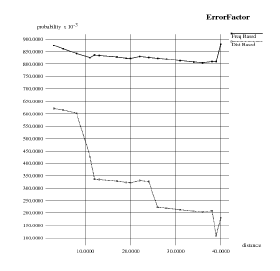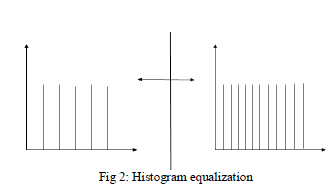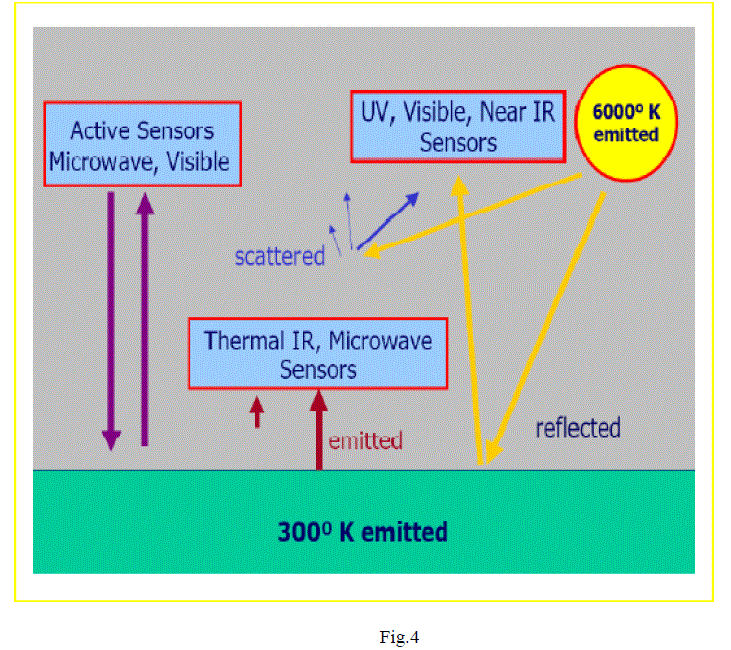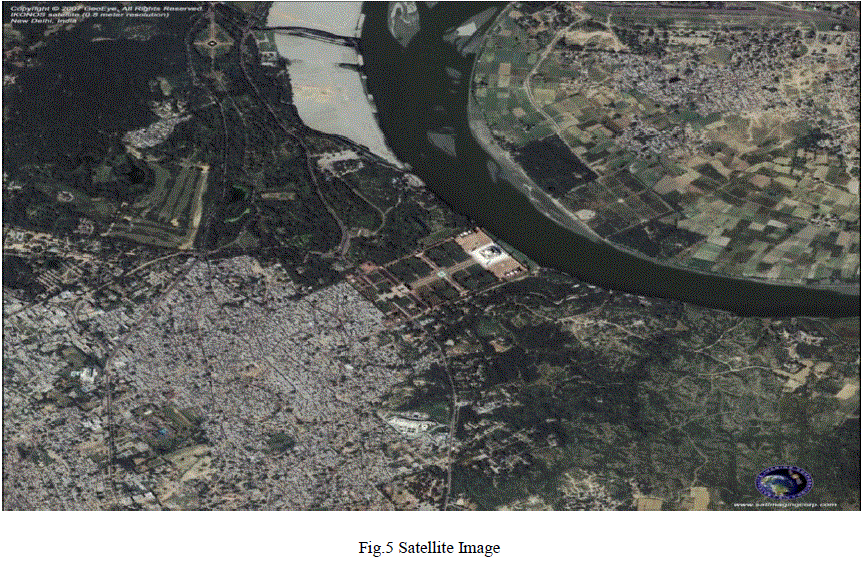Keywords
|
| Urbanization, Remote Sensing, GIS, Cartographic surveys |
INTRODUCTION
|
| Planning is a widely accepted way to handle complex problems of resources allocation and decision making. It involves the use of collective intelligence and foresight to chart direction, order harmony and make progress in public activity relating to human environment and general welfare. In order to provide more effective and meaningful direction for better planning and development necessary support of the organization has become essential. Hence the need for a suitable information system is increasingly being felt in all planning and developmental activities, whether these are for urban or rural areas. Urban areas of today are more exactly described as sprawling regions that become interconnected in a dendritic fashion (Carlson and Arthur, 2000). The positive aspects of urbanization have often been overshadowed by deterioration in the physical environment and quality of life caused by the widening gaps between supply and demand for essential services and infrastructure. Urbanization is inevitable, when pressure on land is high, agriculture incomes are low and population increases are excessive, as is the case in most of the developing countries of the world. Urbanization has become not only of the principal manifestation but also an engine of change, and the 21th century which has become the centre of urban transition for human society. In a way urbanization is desirable for human development. However, uncontrolled urbanization has been responsible for many of the problems, our cities experiences today, resulting in substandard living environment, acute problems of drinking water, noise and air pollution, disposal of waste, traffic congestion etc. To improve these environmental degradations in and around the cities, the technological development in relevant fields have to solved these problems caused by rapid urbanization, only then the fruits of development will reach most of the deprived ones. |
| The modern technology of remote sensing which includes both aerial as well as satellite based systems, allow us to collect lot of physical data rather easily, with speed and on repetitive basis, and together with GIS helps us to analyze the data spatially, offering possibilities of generating various options (modeling), thereby optimizing the whole planning process. These information systems also offer interpretation of physical (spatial) data with other socio-economic data, and thereby providing an important linkage in the total planning process and making it more effective and meaningful. |
| Recent technological advances made in domain of spatial technology cause considerable impact in planning activities. This domain of planning is of prime importance for a country like India with varied geographic patterns, cultural activities etc. The purpose of using GIS is that, maps provide an added dimension to data analysis which brings us one step closer to visualizing the complex patterns and relationships that characterize real-world planning and policy problems. Visualization of spatial patterns also supports change analysis, which is important in monitoring of social indicators. This in turn should result in improving need assessment. The objectives of this paper are to explain remote sensing and GIS applications in various stages of planning, implementation and monitoring of the urban area. |
II. URBANIATION
|
| Urbanization or urban drift is the physical growth of urban areas as a result of rural migration and even suburban concentration into cities, particularly the very largest one. It is closely linked to morderniation, industrialisation, and the sociological process of rationalisation. The rapid urbanization of the world’s population over the twentieth century is described in the 2005 Revision of the UN World Urbanization Prospects report. The global proportion of urban population rose dramatically from 13% (220 million) in 1900, to 29% (732 million) in 1950, to 49% (3.2 billion) in 2005. The same report projected that the figure is likely to rise to 60% (4.9 billion) by 2030. |
| Urbanization has been considered as a problem in India till recently and the city governments in the country have always struggled to solve the problems. But in recent years the perception has changed. With the cities contributing more than 65 per cent of the GDP in the recent years, the government has begun to look at the urban areas as engines of growth. With rapidly increasing population in the urban areas, urbanization has emerged as one of the most serious challenges before the planners. The first appearance of cities and urban development in India was around 2600 BC with the advent of the Indus Valley civilization. |
| Urbanization in India was mainly caused after independence, due to adoption of mixed system of economy by the country which gave rise to the development of private sector. Urbanization is taking place at a faster rate in India. Population residing in urban areas in India, according to 1901 census, was 11.4%. This count increased to 28.53% according to 2001 census, and crossing 30% as per 2011 census, standing at 31.16%.After independence, India faced poverty, unemployment and economic backwardness. The architect of modern India, Pandit Jawaharlal Nehru, focused on the domain of science and technology, for economic development. The mixed economy system was adopted, which resulted in the growth of the Public sector in India. |
| This is a list of states and union territories of India by their nominal GDP for the financial year 2011–12 released by Planning Commission of India for the year 2011–12. |
| I. causes of urbanization in India |
| The main causes of urbanization in India are: |
| ? Expansion in government services, as a result of Second World War |
| ? Migration of people from Pakistan after partition of India |
| ? The Industrial Revolution |
| ? Eleventh five year plan that aimed at urbanization for the economic development of India |
| ? Economic opportunities are just one reason people move into cities |
| ? Infrastructure facilities in the urban area |
| ? Growth of private sector after 1990 |
| II. Problems in urbanization |
| Lack of civic amenities is yet another problem. As per 2001 slum census only 65.4 per cent of the households in the cities and towns had access to drinking water within their premises. Remaining households either had the water supply source outside their premises or away from their houses. |
| 1. Urbanization - Source of lighting: Source of lighting is another important area which was surveyed during the census. Though the percentage of households having an electric source of energy was much higher than in the rural areas, yet more than 12 per cent of the households in the urban areas did not have an electric source of lighting and had to depend on other sources like kerosene. About 0.4 per cent of the households in cities and towns had no source of lighting at all. |
| 2. Urbanization - Availability of education facilities: In the urban areas is also a key area, particularly for the poor. While the affluent and upper middle classes normally have best of educational facilities available to them in the cities, the poorer sections find it hard to have access even to basic educational facilities. The level of male and female literacy rates in the slum areas is distinctly lower than non-slum population of cities, with Patna recording highest difference of almost 30 per cent between the level of literacy rates in slum and non-slum areas of the city. |
| 3. Urbanization – Healthcare facilities: Lack of good healthcare facilities is also an area of serious concern. As per the report of a Task Force appointed by the government of India to advise on health scenario in the urban slums, it was pointed out that 6 out of 10 children in slum areas are delivered at home in Indian slums. Further, more than half of India’s urban poor children are underweight and the state of under-nutrition in urban areas is worse than in the rural areas. Reach and utilization of essential preventive health services by the urban poor is generally found to be very low and about 60 per cent of the children below one year of age are not fully immunized. Only 4 per cent couples use birth spacing methods. |
| In addition to the above mentioned problems pertaining to urban and social services, there are serious gaps in the availability of infrastructure facilities in urban areas. Roads are getting congested with more and more new vehicles getting registered every day and parking has become a serious problem in most urban areas. Solid waste management is also a serious problem in the country, particularly in the cities. Safe disposal of the solid waste in a scientific manner is a major issue in Indian cities and towns. With over 350 million people living in urban areas and generating millions of tons of garbage every day, without proper arrangements for safe disposal of the garbage serious problem of water contamination and environment pollution is on the anvil. The problem is worst in the areas inhabited by the poor and in the slums. |
| Urbanization – Government Role |
| For the last about six decades, the government has focused on rural development and rural poverty alleviation. Billions of rupees have been spent but even after 60 years of concentration on this sector, the absolute number of rural poor in the country has actually increased. The government is now viewing the urbanization process as an alternative strategy to eradicate rural poverty. Growth rate of population in the cities in the country is much higher than the general growth rate of population in the country and there is a need to strengthen the cities and towns to be able to brace up to the challenges ahead. The government of India, in December 2005, launched an ambitious programme called Jawaharlal Nehru National Urban Renewal Mission (JNNURM), for renewal of Indian cities on sustainable basis. 63 cities have been chosen under the Mission. There are also two sub-missions. First sub-mission aims at strengthening the urban infrastructure like water supply, sewerage, traffic flow, decongestion, scientific solid waste management, proper storm water drainage, preservation of heritage etc. Second sub-mission is aimed at providing basic services to the urban poor, including proper housing at affordable rates and upgradation of slums to ensure that all the slum areas in the mission cities are provided with the same level of facilities as are available to the better areas in the Mission cities. |
| Funding pattern under the JNNURM is that for the States of the north east 90 per cent of the cost of projects approved under the mission is to be provided by the Union government as grant in aid and the remaining amount has to be pooled in by the Urban Local Body (ULB) concerned and the State government. For other hilly States and the cities with less than one million population, the percentage of ACA is 80 per cent. For cities with population between one million and four million, the ACA is 50 per cent of the project cost, while the same for the cities with over four million population is 35 per cent. It is expected that after including the State and ULB share, during the mission period (upto 2012-13), more than Rs 1,50,000 crore would be spent for up-gradation of urban infrastructure and for providing basic services for urban poor in the Mission cities. In addition to the JNNURM funding and projects, the city administration has to make special efforts to make sure that the challenges of urbanization are met and the cities and towns are able to cope up with the urban problems in the years to come |
| Consequences of Urbanization |
| Rapid rise in urban population, in India, is leading to many problems like increasing slums, decrease in standard of living in urban areas, also causing environmental damage. The Industrial Revolution in the 18th century caused countries like United States and England to become superpower nations but the present condition is worsening. India's urban growth rate is 2.07% which seems to be significant compared to Rwanda with 7.6%. India has around 300 million people living in metropolitan areas. This has greatly caused slum problems, with so many people over crowding cities and forcing people to live in unsafe conditions which also includes illegal buildings. Water lines, roads and electricity are lacking which is causing fall of living standards. It is also adding to the problem of all types of pollution. Urbanization also results in a disparity in the market, owing to the large demands of the growing population and the primary sector struggling cope with them. |
| Remote sensing is the collection of information about an object or phenomenon without making physical contact with the object. In modern usage, the term generally refers to the use of aerial sensor technologies to detect and classify objects on Earth (both on the surface, and in the atmosphere and oceans) by means of propagated signals (e.g. electromagnetic radiation emitted from aircraft or satellites). |
| There are two main types of remote sensing: |
| Passive remote sensing: Passive remote sensing means that the energy collected by the sensors is being provided by the environment. Reflected sunlight is the most common source of radiation measured by passive sensors. Examples of passive remote sensors include film photography, infrared, charge-coupled devices, and radiometers. |
| Active remote sensing: Active remote sensing on the other hand, involves transmitting energy, allowing that energy to reflect off to the surrounding environment, and then recollecting that energy using a sensor. RADAR and LiDAR are examples of active remote sensing where the time delay between emission and return is measured, establishing the location, speed and direction of an object. |
| Remote sensing makes it possible to collect data on dangerous or inaccessible areas. Remote sensing applications include monitoring deforestation in areas such as the Amazon Basin, glacial features in Arctic and Antarctic regions, and depth sounding of coastal and ocean depths. Remote sensing also replaces costly and slow data collection on the ground, ensuring in the process that areas or objects are not disturbed. |
| Orbital platforms collect and transmit data from different parts of the electromagnetic spectrum, which in conjunction with larger scale aerial or ground-based sensing and analysis, provides researchers with enough information to monitor trends such as El Nino and other natural long and short term phenomena. Other uses include different areas of the earth sciences such as natural resource management, agricultural fields such as land usage and conservation, and national security and overhead, ground-based and standoff collection on border areas. |
| By satellite, aircraft, spacecraft, buoy, ship, and helicopter images, data is created to analyze and compare things like vegetation rates, erosion, pollution, forestry, weather, and land use. These things can be mapped, imaged, tracked and observed. The process of remote sensing is also helpful for city planning, archaeological investigations, military observation and geo morphological surveying |
III. STAGES OF URBAN PLANNING
|
| Urban areas face many critical environmental problems which are manifested at the time of crises. To avoid such occurrences the prime requirement is quantification which requires a comprehensive Urban Information System (UIS) to be developed to cater the developmental needs of the growing urban areas. |
| Sequential steps followed by urban information system: |
| 1. Thematic map preparation from satellite data using visual interpretation techniques. |
| 2. Generation of spatial framework in GIS for perspective and development plans. |
| 3. Integration of thematic maps using GIS techniques for urban sprawl analysis and urban land use change analysis. |
IV. REMOTE SENSING AND GIS APPLICATIONS IN URBAN PLANNING
|
| In India, the complexity of urban development is so dramatic that it demands immediate attention and perspective physical planning of the cities and towns. it is necessary and fundamental for policy makers to integrate like remote sensing into urban planning and management. New approaches are required, and new methods must be incorporated into current practice. |
| Until recently, maps and land survey records from the 1960’s and 70’s were used for urban studies, but now the trend has shifted to using digital, multispectral images acquired by EOS and other sensors. The trend towards using remotely sensed data in urban studies began with first-generation satellite sensors such as Landsat MSS and WAS given impetus by a number of second generation satellites: Landsat TM, ETM+ and SPOT HRV. The recent advent of a third generation of very high spatial resolution (?5meter/pixel) satellite sensors is stimulating. |
| Advancement in the technology of remote sensing has brought miracle in the availability of the higher and higher resolution satellite imageries. They are IRS-P6 Resourcesat imagery with 5.8 meter resolution in multispectral mode, IRS-1D Pan image with 5.8 meter resolution, Cartosat-I imagery of 2.5 meter resolution with stereo capabilities, Cartosat-II with 1 m, IKONOS imageries of Space Imaging with 4 meter in multispectral mode and 1 meter in panchromatic mode, Quickbird imagery of Digital Globe with 61 cm resolution in panchromatic mode. These high resolutions of the sensors provide a new methodology. |
| Apart from Cartographic applications, P-6 data will be useful in cadastral mapping and updating terrain visualization, generation of a national topographic database, utilities planning. The satellite will provide cadastral level information up to a 1:5,000 scale, and will be useful for making 2-5 meter contour map (NRSA 2005). |
| The output of a remote sensing system is usually an image representing the scene being observed. Since remote sensing may not provide all the information needed for a full-fledged assessment, many other spatial attributes from various sources are needed to be integrated with remote sensing data. This integration of spatial data and their combined analysis is performed through GIS technique. It is a computer assisted system for capture, storage, retrieval, analysis and display of spatial data and non-spatial attribute data. The data can be derived from alternative sources such as survey data, geographical/topographical/aerial maps or archived data. Data can be in the form of locational data (such as latitudes/longitudes) or tabular (attribute) data. |
| I. Application of Remote Sensing technology can lead to innovation in the planning process in various ways: |
| 1. Digitization of planning basemaps: Digitization of planning basemaps has facilitated updating of basemaps wherever changes have taken place in terms of land development etc. Superimposition of any two digital maps which are on two different scales is feasible. Similarly superimposition of revenue maps on basemaps with reasonable accuracy is great advantage compared to manually done jobs. |
| 2. Digital formate: correlating various layers of information about a feature from satellite imagery, planning maps and revenue maps is feasible with the help of image processing software like ERDAS Imagine, ENVI and PCI Geomatica, ILWIS. Such super imposed maps in GIS software like Map info, Geomedia, Arc View, Auto CAD Map and Arc GIS provide valuable information for planning, implementing and management in urban areas. |
V. CONCLUSION
|
| Planning and managing cities in the new era of globalization and economic liberalization would be a demanding task calling for new skills and approach. Indian cities will have to compete with others to attract investors and, therefore, issues like quality of infrastructure, energy efficient services provision and environmental conditions in a city besides economic stability would play a significant part in such competition. Urban planning profession in general will have to address these issues and respond rapidly. It is worthwhile noting that spatial dynamics of cities is complex to fathom and urban theory is still static. In other words, the urban planning authorities and agencies in every parts of the country should adopt new technologies like remote sensing and GIS. These have capability to provide necessary physical input and intelligence for preparation of basemaps, for planning proposals and act as monitoring tool during implementation phase(s). Satellite remote sensing with repetitive and synoptic viewing capabilities, as well as multispectral capabilities, is a powerful tool for mapping and monitoring the ecological changes in the urban core and in the peripheral land-use planning, will help to reduce unplanned urban sprawl and the associated loss of natural surrounding and biodiversity. On the other hand, moving further, interfacing of urban planning models with GIS should now receive due attention. Incorporation of land-use transportation models, water distribution network analysis, stimulation of urban activities to evaluate different urban development alternatives in the GIS framework needs to be explored for added advantage. |
ACKNOWLEDGEMENT
|
| Mahesh Jhawar ,Nitin Tyagi and Vivek Dasgupta are thankful to their family. They inspired them during their research work. They are also thankful to Mr. H.C. Gupta (HOD- CIVIL Dept.) and Mr. K.S Mishra for their co-ordination and devoting their precious time to them. At last, constructive criticism and valuable suggestions from readers are welcome. |
Tables at a glance
|
|
|
| |
Figures at a glance
|
 |
 |
 |
 |
 |
| Figure 1 |
Figure 2 |
Figure 3 |
Figure 4 |
Figure 5 |
|
| |
References
|
- Alipio BC, David FC, Isabel RS, Juan CNM. Manuel AE. Comparison of batch, stirred flow chamber, and column experiments to study adsorption, Desorption and transport of carbofuran within two acidic soils. Chemosphere. 2012; 88(1): 106-120.
- Arnaud B, Richard C, Michel S. A comparison of five pesticides adsorption and Desorption processes in thirteen contrasting field soils. Chemosphere. 2005; 61(5): 668-676.
- Chunxian W, Jin-Jun W, Su-Zhi Z, Zhong-Ming Z. Adsorption and Desorption of Methiopyrsulfuron in Soils. Pedosphere. 2011; 21(3): 380-388.
- Chunxian W, Suzhi Z, Guo N, Zhongming Z, Jinjun W. Adsorption and Desorption of herbicide monosulfuron-ester in Chinese soils. J Environ Sci. 2011; 23(9): 1524-1532.
- Christine MFB, Josette MF. Adsorption-desorption and leaching of phenylurea herbicides on soils. Talanta. 1996; 43(10): 1793-1802.
|